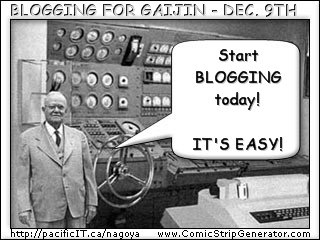Four points for business blogging along consistently
Blogging is an act that is best repeated often. Regular blogging is what gets you views, followers, comments and ultimat …
Four points for filling your business blog with great content
When it comes to business blogging (or any blogging for that matter), content is king of social media. You can save mone …
Business Blogging Beginnings
One of the main columns upon which social media for business sits is blogging. It may take time or some money, but there …
Incoming Lead Processing CampaignsStarting a Relationship
Lead nurturing is no different from building any longterm relationship. You need to foster respect and trust, be a good …
How does Social Media Help Generate Leads?
[caption id="" align="alignleft" width="350" caption="Image via CrunchBase"] [/caption] What is the ultimate purpose of …
What IS NOT and What IS Lead Nurturing
You don't want confuse lead nurturing with sending out brochures or marketing copy focused on your product information o …
Developing a Strong, Attention Grabbing Marketing Message
Do you have a marketing message that grabs your prospects attention? As business owners we all need a strong marketing m …
4 Insights into Successful Marketing
A cook starts with a recipe. A tourist starts with a map. So why do many small business owners think they can run their …
4 Parts of a Call to Action that Lead to Conversion
All businesses selling products or services are familiar with the term marketing budget. This means a plan to organize …
Two Landing Pages Properties and Five Ways They Work
You have spent a lot of your marketing budget setting up your website. Your homepage looks real good and reminds you of …








